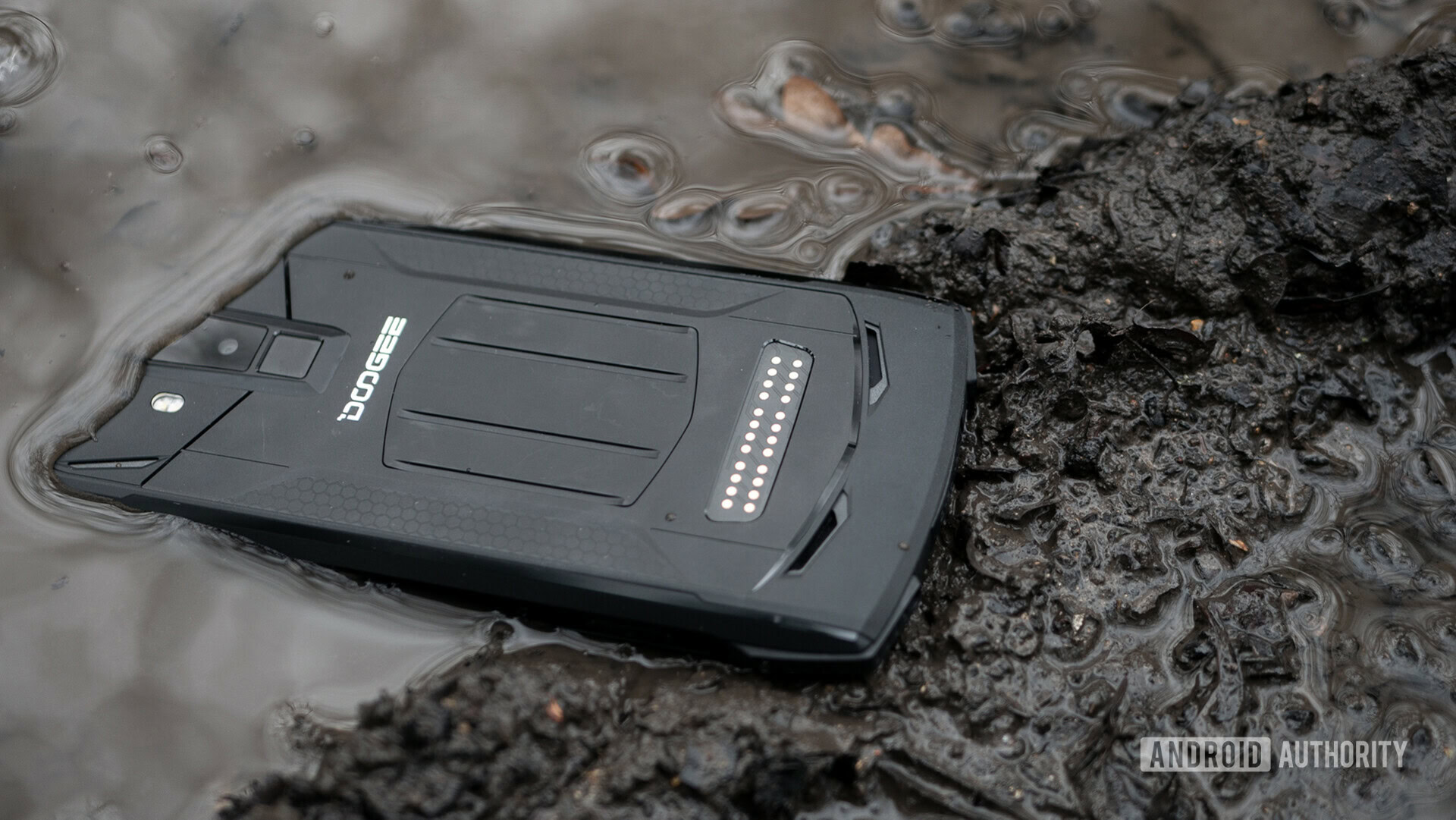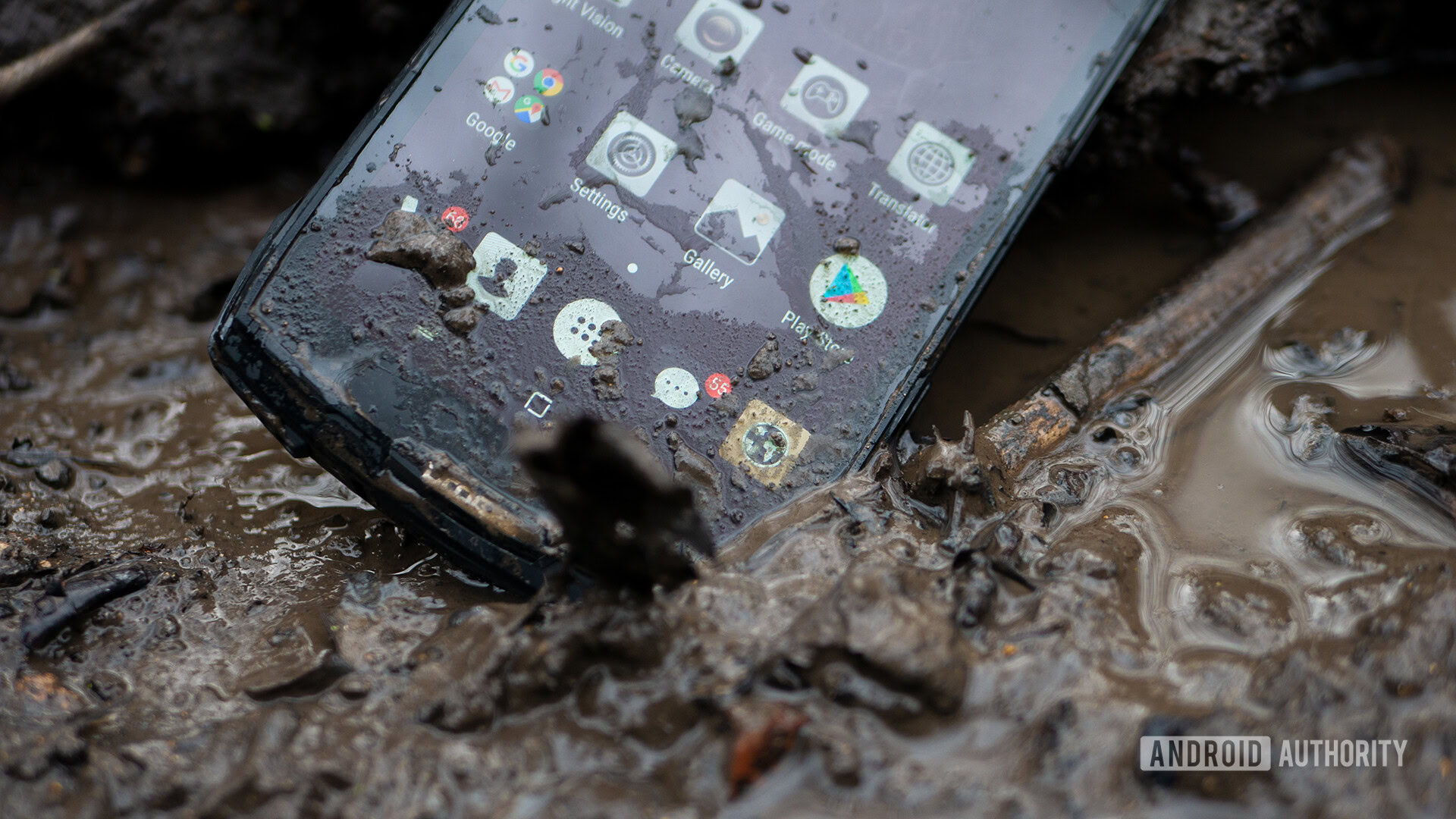Affiliate links on Android Authority may earn us a commission. Learn more.
What does MIL-STD-810 mean? Combat ready phones explained

MIL-STD-810 is a U.S. military specification that guarantees a level of durability for a piece of technology. More specifically, it is a U.S. Department of Defense Test Method Standard that focuses on making sure products are ready to withstand military applications.
In the world of smartphones, the most popular standards are MIL-STD-810g and MIL-STD-810H. Any MIL-STD-810G or MIL-STD-810H device should be field-ready or even “combat-ready” in principle. Now, more and more consumer manufacturers are using the rating as a way to market their rugged devices. Let’s dig deeper into these standards.
MIL-STD-810G compliance: What does it mean?

If a device boasts MIL-STD-810G compliance, it should, in theory, be durable. It will be far more likely to survive drops and harsh environmental conditions. MIL-STD-810G devices have gone through a series of 29 tests to prove their high level of resistance. These tests include resistance to a bevy of things that can hurt a device in hostile or harsh environments.
MIL-STD-810G devices are tested against:
- Low pressure
- High temperature
- Low temperature
- Temperature shock
- Fluid contamination
- Solar radiation
- Rain
- Humidity
- Fungus
- Salt fog
- Sand and dust
- Explosive atmosphere
- Immersion
- Acceleration
- Vibration
- Acoustic noise
- Shock
- Pyroshock
- Acidic atmosphere
- Gunfire shock
- Temperature, humidity, vibration, and altitude
- Icing/freezing rain
- Ballistic shock
- Vibro-acoustic/temperature
- Freeze/thaw
- Time waveform replication
- Rail impact
- Multi-exciter
- Mechanical vibrations of shipboard equipment
What about MIL-STD-810H?
MIL-STD-810H is the MIL-STD-810G’s evolution. The list of tests is actually the same (listed in the previous section), but tests have been updated with newer standards for better accuracy and ruggedness. That said, the difference between MIL-STD-810G and MIL-STD-810H might be minuscule for most users, but it’s essential to keep it in mind if you want the latest revision of military standards.
MIL-STD-810H is becoming much more common with newer rugged phones, so you probably won’t have issues finding a device with the latest standard.
Which phones have MIL-STD-810G or MIL-STD-810H?

If you work on a building site, are constantly dropping your phone, or enjoy hiking and rock climbing, you might want to consider a MIL-STD-810G or MIL-STD-810H-rated phone.
The best phones with MIL-STD-810 compliance:
The limitations

While MIL-STD-810 ratings are useful, these standards are not foolproof. When testing the aforementioned DOOGEE S90, I dropped it from a small height into a puddle (it also boasted IP69K water resistance). The device should have easily stood up to this mild test, yet it immediately lost functionality in one of the buttons.
How can that happen? Quality control issues and bad luck aside, it comes down to a lack of strict regulation.
For a smartphone to claim MIL-STD-810G, manufacturers must meet several stringent guidelines set out in official documentation. Ideally, this means sending a device to external testing laboratories that can emulate the same 29 tests used by the military. Unfortunately, there is nothing to stop a manufacturer from running the tests in-house and without external verification.
The company does not need to provide proof that any of these tests were actually carried out.
While in-house testing is perfectly fine on paper, the issue is that the company does not need to prove that the tests were actually carried out. Therefore, a company can claim that its device complies with this standard, having “fudged” or entirely omitted certain parts!
Buying MIL-STD-810 compliant smartphones

What is a consumer to do?
The best strategy is to apply a little common sense and a “wait and see” attitude. While some manufacturers have made some solid phones with MIL-STD-810 ratings, their design sensibilities alone mean they’re unlikely to be as durable as something explicitly built as a “rugged phone” with rubber corners and a protective screen. These might well be MIL-STD-810 compliant, but I find it hard to think that these phones are genuinely “combat ready,” as they are almost entirely made of glass.
With something like the DOOGEE, the designs scream durability. Those things look like bricks! The problem is that the devices don’t quite live up to their own hype. The only way you could know this as a consumer would be to wait and see what other users experience.
MIL-STD-810G is certainly a very encouraging thing to look out for.
In short, the MIL-STD-810G and MIL-STD-810H standards are certainly very encouraging things to look out for, but it’s still worth doing a little of your own research, too. Also, remember that just because you can abuse a phone more doesn’t mean you should. These standards shouldn’t be an excuse to be completely careless with your device. They are there for those “just in case” moments.
FAQs
MIL-STD-810G is a standard created by the US military. It ensures a certain level of durability with a series of 29 tests. In theory, products with this rating should be field or combat-ready.
MIL-STD-810H is the evolution of MIL-STD-810G. This standard involves the same tests, but these have been updated for better accuracy and ruggedness.
Technically speaking, MIL-STD-810H is the best level of ruggedness offered by this rating system. That said, the difference between it and MIL-STD-810G might be insignificant to most users. Both represent very rugged products.
Plenty of manufacturers make rugged devices that meet these compliances. The most popular ones include Cat, DOOGEE, Samsung, Ulefone, and Unihertz.